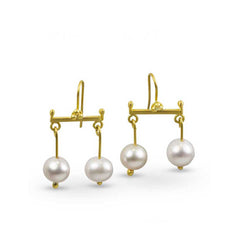by Nancy Troske February 15, 2017

In 79 AD, life in the Roman resort city of Pompeii came to a crashing halt. Although there had been rumblings from the nearby volcano, Vesuvius, those living in the city ignored them. On August 24th at 8 a.m a series of small emissions from Mount Vesuvius. For several days past there had been earth tremors which were not particularly alarming because they are frequent in Campania; but that night the shocks were so violent that everything felt as if were not only shaken but overturned.
Pliny the Younger – who observed the eruption from Misenum, beyond Naples 1 p.m wrote:
“Vesuvius erupts suddenly and with great force. A cloud of volcanic materials soars high above the mountain, spreading out in the shape of a flat topped pine tree. Within 30 minutes, the surging dark cloud rises some 14 km above Vesuvius. Ash drifts over Pompeii. … a cloud of unusual size and appearance…being like an umbrella pine, for it rose to a great height on a sort of trunk and then split off into branches … 3 p.m. Vesuvius spews its contents higher and higher. As it rises, the volcanic material — mostly fragments of hardened lava (lapilli) — cools and then hails down on Pompeii. Most residents flee, although some seek shelter or stay behind to guard their property. Volcanic debris begins to clog the River Sarno and the port, making them impassable to ships. Seismic shockwaves shake the area. … there was a danger from falling pumice stones … as a protection against falling objects they put pillows on their heads tied down with cloths … We also saw the sea sucked away … so that quantities of sea creatures were left stranded on dry sand.” (read more of this first hand account from the Melbourne Museum)
Pompeii was buried under several feet of ash and rock. The ruined city remained frozen in time until it was discovered by a surveying engineer in 1748. Even after hundreds of years of work, about a third of the city still lies buried. Today, Pompeii is undoubtedly one of the world’s best known archaeological sites. Its fame comes from its dramatic destruction and extraordinary preservation as a result of the eruption.
Jewelry has been commonly recovered in Pompeii. Archaeologists have found some skeletons and plaster casts clutching pieces of jewelry as if they were their most precious possessions. Jewelry looks like it was very important to the people of Pompeii as it was worth a large amount of money. Jewelry was a status item in Pompeii. The more you had, the higher status you had within the community.
Less than one in ten woman were found wearing or clutching jewelry. This suggests that many woman weren’t wealthy enough to have jewelry. However, many slave girls were found to be wearing gold snake bracelets with the words “Dominus ancillae suae” on the inside face. This means from the master (dominus) to his slave girl (ancilla). Woman often wore less jewelry due to the fact that many were slaves. The gold snake bracelet was the only jewelry slaves wore. We have evidence of this from the slaves that have been recovered.
 The jewelry worn in Ancient Pompeii was predominantly gold with a few gemstones and pearls. Here’s a beautiful sample of earrings discovered in Pompeii:
The jewelry worn in Ancient Pompeii was predominantly gold with a few gemstones and pearls. Here’s a beautiful sample of earrings discovered in Pompeii:
They were the inspiration for these earrings in 22k gold and Akoya pearls with a slight peach tint. Available here.

An interesting article from a 2013 exhibition at the British Museum in London reveals that beauty and adornment were as important to the women of the Roman Empire as they are to their modern counterparts.
Comments will be approved before showing up.
by Nancy Troske December 01, 2024
by Nancy Troske August 12, 2023

Nancy Troske
Author